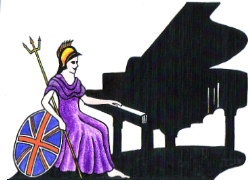Teachers, Accompanists and Piano Entertainers in the UK

UK Piano Page

City of London, London SE13
England
Lewisham Piano Removals, Provide piano moving and
City of London, London E1
England
City of London Piano Removal and Disposal
Tower Hamlets, London E14
England
Tower Hamlets piano moving and piano disposal
11 Bishop Street
Londonderry, County Londonderry BT48 6PL
Northern Ireland
Henderson Music are Ireland's leading supplier of
The Old Dairy
21 Dowland Road
Limavady, County Derry / Londonderry BT49 OHP
Northern Ireland
Limavady pianos service repair and restore pianos
Music Festival for performers and guests Our 10th
18-06-2022 12:30PM
The Morecambe Bay Piano Group was set up to extend
11-12-2021 01:00PM
The Morecambe Bay Piano Group was set up to extend
08-01-2022 01:00PM
The Morecambe Bay Piano Group was set up to extend
12-02-2022 01:00PM
What is Piano Voicing or Toning?
Voicing is an extremely difficult area. It's subjective in the extreme, and has caused endless discussion in piano maintenance circles. But the final goal of voicing is to have the hammers striking the notes of the piano to offer a uniform sound from the bottom to the top of the instrument. Goes without saying that evaluating this capability is governed by the capability of the piano, and the construction of the action parts. But, often a technician will find extremes in voicing, such as a particularly hard hammer, which may result in a note sounding louder than the rest. But, this too can be laid at the door of regulation. This is where the tuner's skill comes into play here. Voicing can be accomplished by pricking the hammer with a set of needles. This pricking changes the structure of the felt, and softens the hammer to a degree.
What is toning?This is the reverse of voicing, and accomplishes the inverse sort of thing. May be necessary to bring up a particularly soft sounding hammer, and bring it into line with its neighbours. This is accomplished by applying a special material to the hammers or ironing with a special tool.